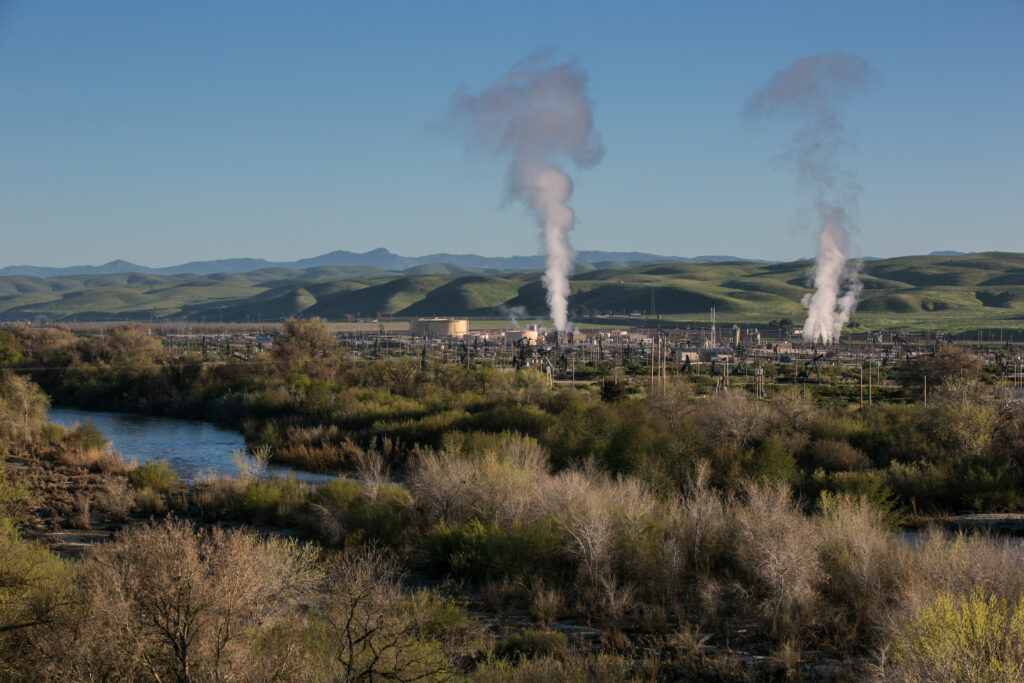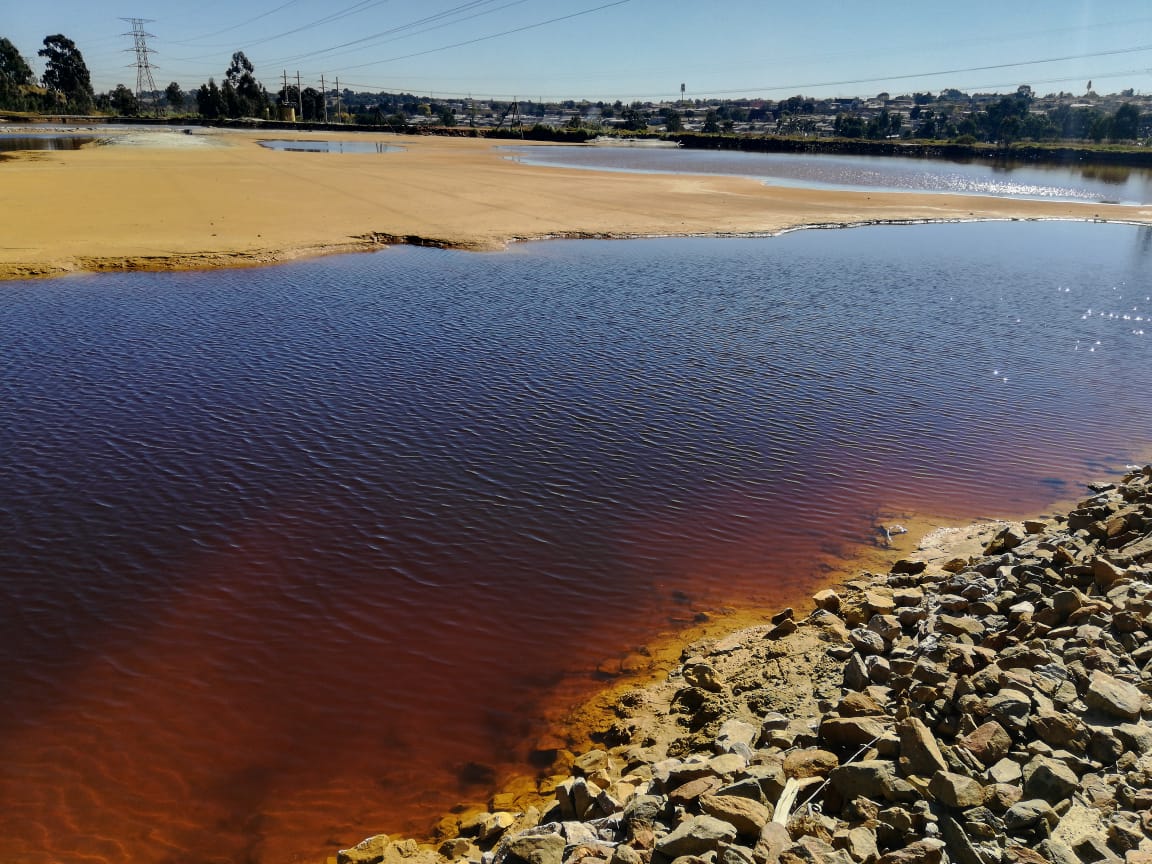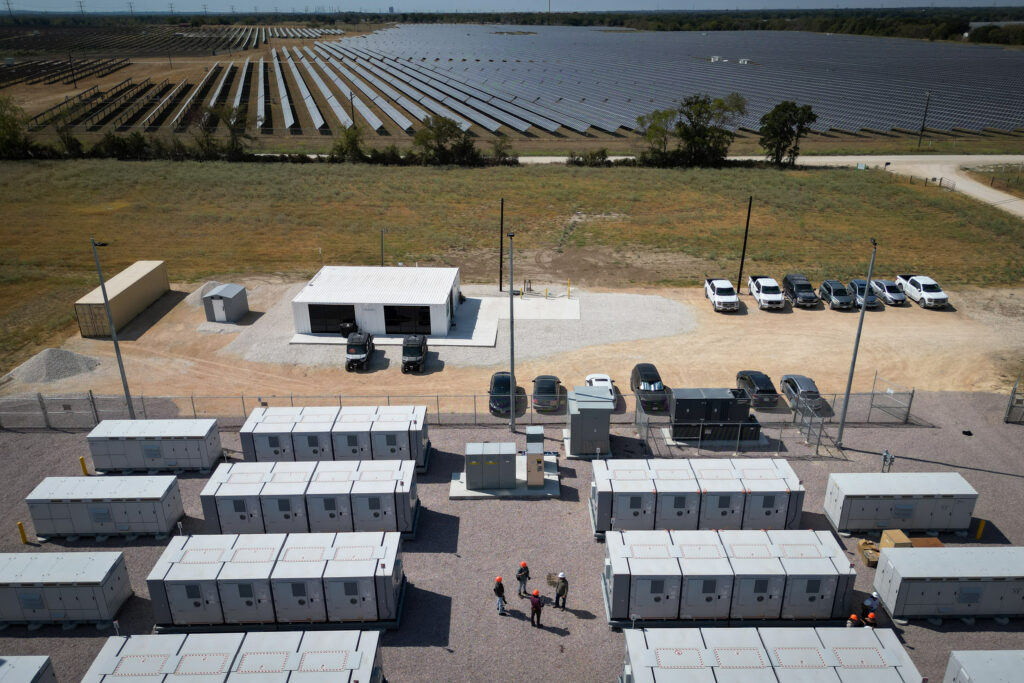BESSEMER, Ala.—A newly identified species of fish in central Alabama is already endangered due to human development, experts say. Now, plans to build a massive hyperscale data center could turn an already dire situation into an extinction event.
“This would nuke this creek,” Yale University biologist Thomas Near said of the data center project and its potential impact on the Birmingham darter, the species his research team recently discovered.
The darter has been found in both Valley Creek and waterways that flow from there, but recent samplings suggest that it’s gone locally extinct in Five Mile Creek, likely due to industrial development along its banks. Near said in an interview that Little Blue Creek, which flows parallel to Five Mile Creek into the now-pristine forest slated for the data center development, is likely one of the only survivable areas of the Birmingham darter’s habitat left.
If the development goes through, Near said, that habitat won’t be survivable for long.
We’re hiring!
Please take a look at the new openings in our newsroom.
See jobs
Nearby residents fighting the proposed data center site said they’re determined to ensure that the new species isn’t made extinct by what they view as a costly and unnecessary development that could take up to a decade to construct and cost as much as $14.5 billion.
Public officials, some of whom have signed nondisclosure agreements with the proposed developer, have remained silent on the project and its impact, citing ongoing litigation and the NDAs.
Despite a recent win in court, residents are now facing the prospect of a zoning meeting Tuesday that could pave the way for the development process.
They hope for their sake—and for the Birmingham darter’s—that’s not the case.
New Species, Familiar Risks
The newly identified Birmingham darter—a small, colorful freshwater fish—faces threats to its existence that are familiar to people studying similar species in the southeastern U.S., a biodiversity hotspot like few in the world.
Primary among the largely human-caused problems are impacts from land development, researchers have said.
“Within the extremely restricted range of the Birmingham darter, 52% of the area is developed,” the 2025 study that first identified the species said. “And the species faces severe threats from multiple sources: water quality degradation from domestic, urban and industrial pollution; sedimentation from agricultural run-off and urban development; and habitat destruction from strip mining for coal.”
Because the Birmingham darter is a micro-endemic species, meaning its habitat covers only a small geographic area—in this case the upper portion of the Valley Creek system—its risk of extinction is already higher, according to Near, who contributed to the paper in the Biology Letters journal.
Near, a Michigan native, was a researcher at the University of Tennessee at Knoxville, where he came enamored with darters, before moving to Yale University.
One of the only remaining survivable habitats for the Birmingham darter may be Little Blue Creek, according to Near. The creek flows into the site of the proposed data center, feeding a wetland located on the 700-acre property that may soon face up to a decade of construction.

Until now, the creek has been largely undisturbed by urban development, avoiding the fate of Five Mile Creek. Near said it’s “very likely” that the Birmingham darter can be found in Little Blue Creek, where lack of public access has so far limited researchers’ ability to conduct a census.
Near said in an interview that based on what he’s learned about the proposed data center project, its construction and use would be devastating for the Birmingham darter and for other aquatic wildlife in the area.
These “dramatic” negative impacts, he said, could include increased river temperature for a fish attuned to inhabit cool, spring-fed streams. Significant water runoff and water extraction for cooling purposes would also fundamentally alter the ecosystem. And Near is concerned about how the data center development might affect the delicate limestone substrate habitat unique to the Birmingham darter.
The proposed data center campus would be the largest in state history and one of the largest such developments in the country. If built to full capacity, the Bessemer data center campus could consume around 10.5 million megawatt hours of energy per year.
That’s more than 90 times the amount of energy used by all residences in Bessemer and more than 10 times the amount of energy used by all residences in Birmingham annually, according to figures from the U.S. Energy Information Administration.
A recent regulatory filing by county officials estimated the water usage by the facility could amount to 2 billion gallons per day, an amount more than five times the entire state’s daily residential usage, according to government figures.


Evans & Evans, a law firm representing the data center developer, has not responded to a request for an interview or a list of questions about the project.
Cindy Lowry, executive director of Alabama Rivers Alliance, said the water usage estimated for the development is staggering.
“Nobody’s looking cumulatively at what this will do to the entire watershed, the entire system, and we need that kind of level of decision-making and scrutiny before we should be considering a huge increase like that,” Lowry said. “It’s very shortsighted to consider this kind of increase. Economic development can’t just be about the perceived upside. We have to look at the negative impacts, too, and weigh those out.”
Proponents of the development have argued that the project will create jobs and increase tax revenue, but those opposed to the proposal point to analyses showing that such claims by data centers are overblown.
Alabama law contains tax carve outs for capital projects, including a specific, 30-year tax abatement meant to attract large data centers. If approved by Bessemer officials, that could amount to a tax cut of more than $500 million over 30 years.
Just the construction necessary for the buildout of this proposed data center could take between seven and 10 years, according to figures from a representative of the proposed developer, Logistic Land Investments LLC, a company first formed in May 2023.
That lengthy construction, paired with the lasting environmental impacts of the data center’s operation, could spell disaster for the newly identified darter, Near said.
“There’s going to be so much effluence—so much runoff,” he said. “Seven years of construction will have an impact, and then its operation is likely going to increase the temperature of the river. The impacts are going to be dramatic.”
“This is something that is wholly unique on the planet—a species and an ecosystem that we can’t find anywhere else on Earth.”
— Thomas Near, Yale University biologist
Because the Birmingham darter was only recently identified by Near’s research team, it does not yet have the protections of the Endangered Species Act, though Near said he believes the species warrants it.
“The Birmingham darter (E. birminghamense) warrants the highest conservation concern status due to its critically imperilled condition and high extinction risk,” Near’s paper concluded. “An urgent systematic survey is needed to assess the status of remaining populations throughout the restricted range of E. birminghamense.”
Near said that it’s common sense that residents would want to protect the newly identified darter from the impacts of a project of this scale.
“Almost everyone has pride in where they’re from or where they live, and this is something that is wholly unique on the planet—a species and an ecosystem that we can’t find anywhere else on Earth,” he said.


Listing a species under the Endangered Species Act can be cumbersome. Though the law outlines a process that should take around two years, the average time to listing is now over a decade, according to researchers.
No matter how slow, it’s a process that nearby residents have said they’re ready to begin.
Mary Rosenboom, who lives in unincorporated Jefferson County near the proposed data center site, said she believes that residents should do all they can to protect the natural environment God blessed them with.
“That is biblical,” she told Inside Climate News. “We’re supposed to be stewards. There’ll be a reckoning for people that destroy God’s land. What God creates, we’re not supposed to destroy. He created it for His purpose—whatever purpose that be.”
Near said he spoke with a local representative of the agency about the darter and its potential position in ESA purgatory. It wasn’t a heartening conversation, he said. Officials pointed to a backlog of species that have yet to be assessed for listing, a commonly cited reason for the long wait time before a species can even become a candidate for listing.
“They didn’t seem particularly enthusiastic,” he said.


Marshalling a One-Man Protest
It can be difficult to secure a meeting with a mayor who’s signed a non-disclosure agreement, but Marshall Killingsworth had a message and a plan.
The message was hard to miss. The 80-year-old grandfather had worked to paste it boldly onto a homemade sign nearly as tall as he was:
“MAYOR GULLEY,” the sign said, “TALK TO THE PEOPLE! DATA CENTERS KILL!”
Killingsworth is one of dozens of residents who vocally oppose the proposed 4.5 million-square-foot data center that they say will destroy their rural way of life. Officials in Bessemer have been mum on the specifics of the massive project, citing the non-disclosure agreements they’ve signed with developers as one reason for their silence.
So though Mayor Kenneth Gulley, bound by the NDA, had so far chosen not to speak with Killingsworth and other concerned residents, Killingsworth thought a sign in front of City Hall might help get the job done. He intended to sit in a camp chair by the sign and read his copy of Billy Graham’s “Angels.”
This story is funded by readers like you.
Our nonprofit newsroom provides award-winning climate coverage free of charge and advertising. We rely on donations from readers like you to keep going. Please donate now to support our work.
Donate Now
But soon after his arrival around 8 a.m. last Wednesday, his plan was cut short. Killingsworth had set up his sign near his parking spot and was heading toward the entrance of City Hall to ask for a meeting when a police officer exited the building to intercept him.
Killingsworth would not be permitted inside City Hall without an appointment, the officer said. The officer then turned his attention to the sign, located in plain view, a stone’s throw from where the two men spoke.
“You have to take it down,” the officer said in a video captured by Inside Climate News. Killingsworth asked why. “Because it’s on public property,” the officer said, heading on foot toward the sign.
In the few moments it took the men to reach it, several additional Bessemer police vehicles arrived on scene. Killingsworth continued to ask why he was being asked to take down the sign.
“Where’s the First Amendment?” Killingsworth asked one of the officers.
Then Bessemer Police Sgt. Gantman Hoof arrived and ordered him to remove the sign immediately.
“Take it down, and we can do all that talking later,” Hoof said. “I’m here to handle business. Take it down. You just want to talk, but I’m just asking you to take your sign down, or we’re going to take it down for you.”
Killingsworth obeyed. “We were ordered to do it, and we follow orders,” Hoof said after that. “We were ordered to take it down, and it’s gotta come down.”
Hoof wouldn’t say whether the mayor ordered the sign’s removal.
“It doesn’t matter,” he said. “It came from my supervisors [at the police department]. Where that came from, I’m not sure. But it came to us, and so he’s going to take it down.”
Killingsworth said he believes his First Amendment right to free speech and protest were violated that day. He said he was shocked by what he viewed as an unnecessarily aggressive response to a single-man protest.
“It’s un-American,” he said.
Renee Griffin, staff attorney at the Reporters Committee for Freedom of the Press, reviewed video footage of Killingsworth’s interaction with police and said in an email that holding a sign in a public space outside a city hall garners a high level of constitutional protection.
“A public sidewalk is the quintessential public forum, where a citizen’s right to speak and express opinions receives maximum protection under the First Amendment,” she wrote.
Public officials signing NDAs related to major development projects is also concerning, she said: “There is a significant public interest in how private companies plan to use public land and public resources, and transparency into those proposals is valuable.””
A secretary for Gulley, who’s serving his fourth term in the city’s top office, said he was unavailable for an interview Wednesday. The mayor did not respond to a list of questions about the data center, its impact or the incident with Killingsworth outside City Hall.
Killingsworth, Rosenboom and other residents interviewed by Inside Climate News said that whether they’re able to secure a meeting with the mayor or not, they’re gearing up for the Tuesday zoning meeting scheduled at 4 p.m. inside City Hall that could be the first step toward approval of the project.
Following a court intervention that reset the rezoning process over claims of inadequate public notice, city officials appear to be battening down for a fight.
New language added to the public notices now limits comments during the meeting not to any concerned residents, but only to residents who received a copy of the notice—those living within 500 feet of the proposed project site. Despite that limitation, a change in the zoning ordinance allowing data centers in areas zoned for “light industrial use,” supported by the city, could impact many more residents in the future, not just those living near this particular site.
Rosenboom said she hopes Gulley and other public officials are present for Tuesday’s meeting—and that they listen to residents’ fears. She said if those in power take the time to look at the potential impacts of the development project, God will do the rest.
“We can’t go out there from a position of defeat,” she said. “We have to go from a position of victory. We’re going to win.”
About This Story
Perhaps you noticed: This story, like all the news we publish, is free to read. That’s because Inside Climate News is a 501c3 nonprofit organization. We do not charge a subscription fee, lock our news behind a paywall, or clutter our website with ads. We make our news on climate and the environment freely available to you and anyone who wants it.
That’s not all. We also share our news for free with scores of other media organizations around the country. Many of them can’t afford to do environmental journalism of their own. We’ve built bureaus from coast to coast to report local stories, collaborate with local newsrooms and co-publish articles so that this vital work is shared as widely as possible.
Two of us launched ICN in 2007. Six years later we earned a Pulitzer Prize for National Reporting, and now we run the oldest and largest dedicated climate newsroom in the nation. We tell the story in all its complexity. We hold polluters accountable. We expose environmental injustice. We debunk misinformation. We scrutinize solutions and inspire action.
Donations from readers like you fund every aspect of what we do. If you don’t already, will you support our ongoing work, our reporting on the biggest crisis facing our planet, and help us reach even more readers in more places?
Please take a moment to make a tax-deductible donation. Every one of them makes a difference.
Thank you,


















